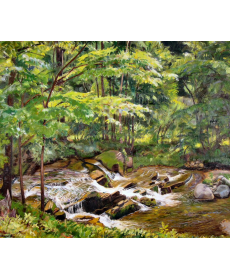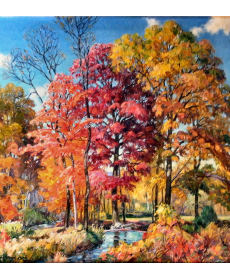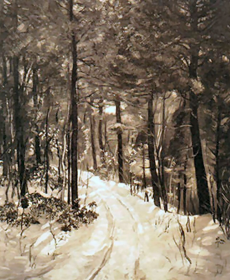The Little Shop Studio
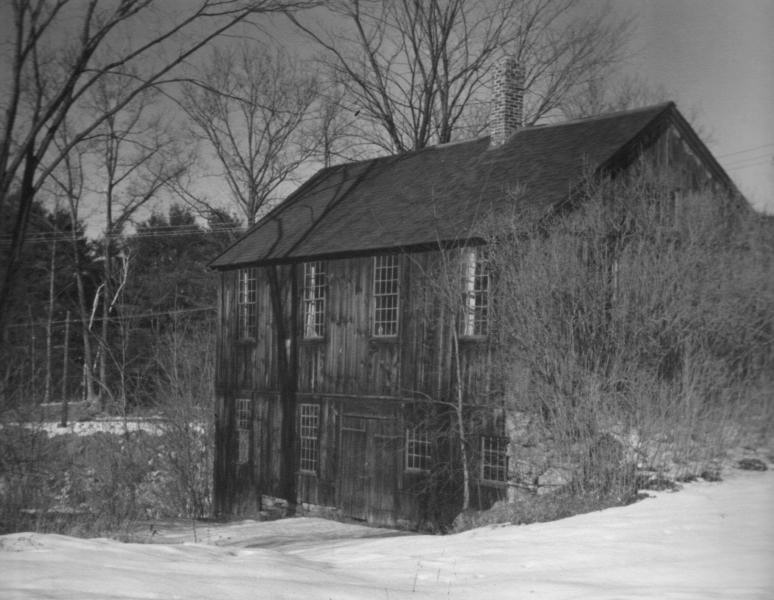
The Little Shop, a rear view as it appeared during Robert Strong Woodward's time.

Map showing the location of three of Robert Strong Woodward's studios
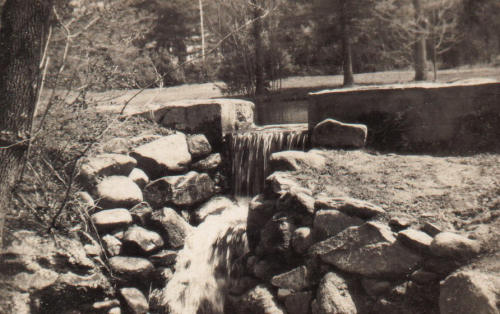
The pond and spillway that fed the brooklet under The Little Shop,
photo by F. Earl Williams.
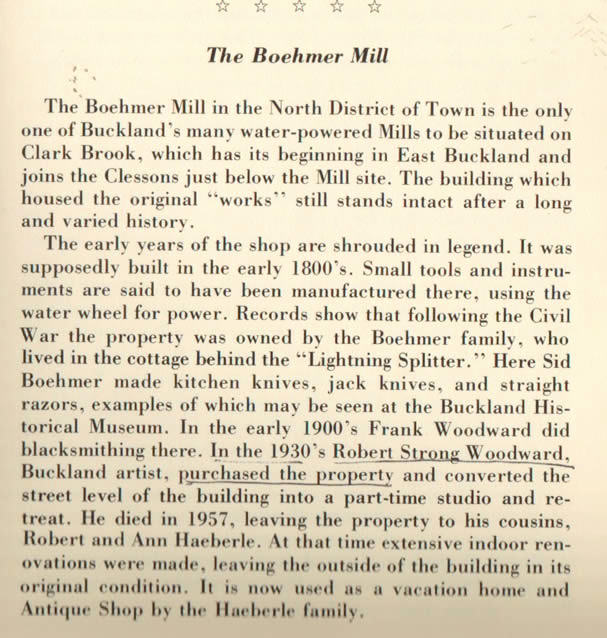
Article from The History of Buckland, Massachusetts, Bicentennial Edition, 1979
The Boehmer Mill
The Boehmer Mill in the North District of Town is the only one of Buckland's many water-powered Mills to be situated on Clark Brook, which has its beginning in East Buckland and joins the Clessons just below the Mill site. The building which housed the original "works" still stands intact after a long and varied history.
The early years of the shop are shrouded in legend. It was supposedly built in the early 1800's. Small tools and instruments are said to have been manufactured there, using the water wheel for power. Records show that following the Civil war the property was owned by the Boehmer family, who lived in the cottage behind the "Lightning Splitter." Here Sid Boehmer made kitchen knives, jack knives, and straight razors, examples of which may be seen at the Buckland Historical Museum. In the early 1900's Frank Woodward did blacksmithing there. In the 1930's Robert Strong Woodward, Buckland artist, purchased the property and converted the street level of the building into a part-time studio and retreat. He died in 1957, leaving the property to his cousins, Robert and Ann Haeberle. At that time extensive indoor renovations were made, leaving the outside of the building in its original condition. It is now used as a vacation home and Antique Shope by the Haeberle family.
Article from The History of Buckland, Massachusetts,
Bicentennial Edition, by Beulah Cross, 1979
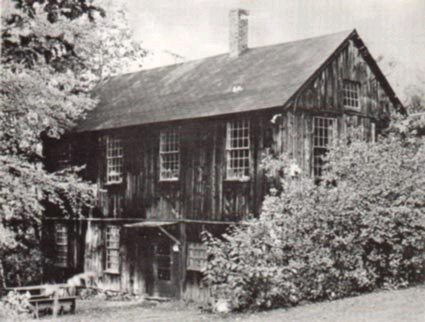
The Little Shop, photo by F. Earl Williams.
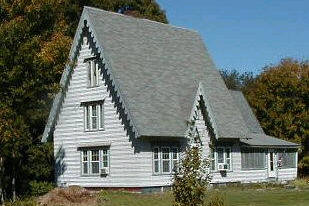
The Lightning Splitter in Buckland
Due to its close proximity to the Hiram Woodward place, it is now difficult to determine whether a painting was made at the Hiram Woodward Studio or The Little Shop Studio. The only known painting made of the interior of The Little Shop was named The Book Corner.
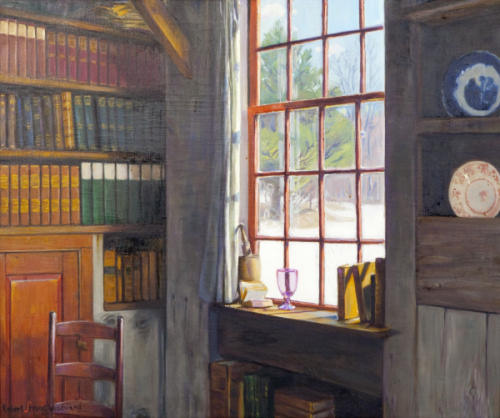
The Book Corner - the only known painting from inside The Little Shop
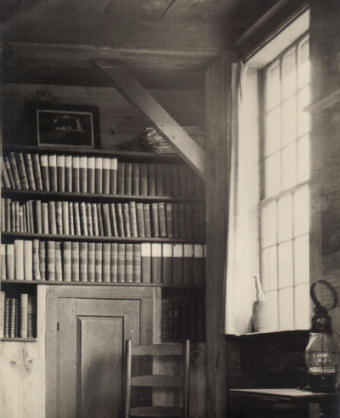
Inside The Little Shop, photo by F. Earl Williams
Clifton Richmond, an Easthampton factory owner, after visiting Robert Strong Woodward wrote the following description of RSW making over the old Boehmer mill into an attractive and comfortable studio and furnishing it with antique furniture:
"When Woodward unwillingly took the "Little Shop", and the acreage with it, for three hundred dollars, the unwillingness was wholly financial. Reconditioning was no easy task. To that end the artist scoured surrounding hills and, board by board, nail by nail, brought back a wealth of very wide, weather-beaten boards and hand wrought nails. Each deserted farm or old cellar hole yielded something. With these boards the interior of the building was relined; yet there is no evidence by a cut edge of newness, the boards having upon their edges the loving weatherworn grey of time. Courageous? Yes. A wealth of fine feeling, know-how and patience, fused together, have here reproduced the look of age that has a charm all its own.
The natural color of the woodwork, the pewter, the grey and black curtains and the soapstone stove, are relieved by the dull red of the window sashes, the doors, an old chest, a dish of rosy apples, pieces of antique glass on the window sills. Nor does the eye miss the harmony of the old grey-green chairs, table, and the old crock on the floor filled with laurel leaves. The antique furniture and decorations caught the eye of the Lady-who-chums-with-me, also the contents of the set-in wall cupboards, the ancient latches and "Holy Lord" hinges.
The many windows in this building all have small panes of glass. Not one of these is new, nor is there an old pane cut down. Toward completion of restoration, the artist was asked if a few lights of old glass could be reduced in size. He replied: 'No. We must be patient and eventually find them.' The artistic desire for accurate reproduction versus the business urge to have done with it."
At the death of RSW in 1957 the "Little Shop" was bequeathed to RSW's niece and nephew and their mother made it into an antique shop. In the following years it was sold and rebuilt into a small home, its outside appearance remaining essentially unchanged.
"When Woodward unwillingly took the "Little Shop", and the acreage with it, for three hundred dollars, the unwillingness was wholly financial. Reconditioning was no easy task. To that end the artist scoured surrounding hills and, board by board, nail by nail, brought back a wealth of very wide, weather-beaten boards and hand wrought nails. Each deserted farm or old cellar hole yielded something. With these boards the interior of the building was relined; yet there is no evidence by a cut edge of newness, the boards having upon their edges the loving weatherworn grey of time. Courageous? Yes. A wealth of fine feeling, know-how and patience, fused together, have here reproduced the look of age that has a charm all its own.
The natural color of the woodwork, the pewter, the grey and black curtains and the soapstone stove, are relieved by the dull red of the window sashes, the doors, an old chest, a dish of rosy apples, pieces of antique glass on the window sills. Nor does the eye miss the harmony of the old grey-green chairs, table, and the old crock on the floor filled with laurel leaves. The antique furniture and decorations caught the eye of the Lady-who-chums-with-me, also the contents of the set-in wall cupboards, the ancient latches and "Holy Lord" hinges.
The many windows in this building all have small panes of glass. Not one of these is new, nor is there an old pane cut down. Toward completion of restoration, the artist was asked if a few lights of old glass could be reduced in size. He replied: 'No. We must be patient and eventually find them.' The artistic desire for accurate reproduction versus the business urge to have done with it."
At the death of RSW in 1957 the "Little Shop" was bequeathed to RSW's niece and nephew and their mother made it into an antique shop. In the following years it was sold and rebuilt into a small home, its outside appearance remaining essentially unchanged.
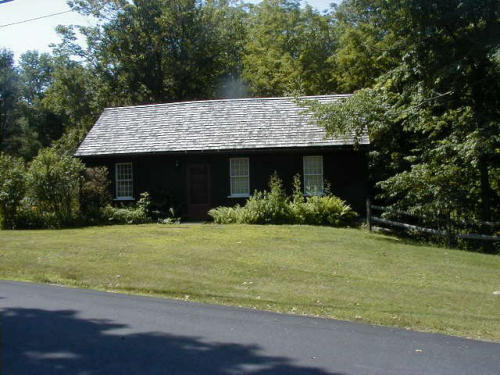
The Little Shop in 2007
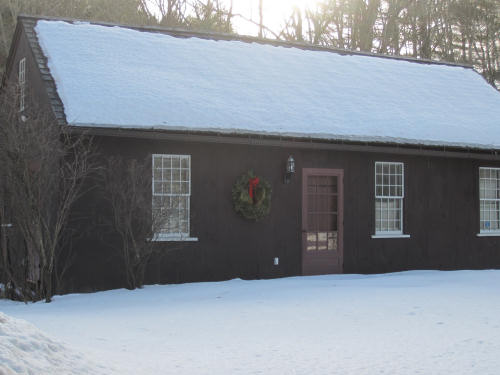
The Little Shop as it appears today in the winter of 2013
The Little Shop was kept up by RSW until his death when it was willed to his cousins, Robert and Ann Haeberle. Subsequently it became an antique shop run by their mother Florence Haeberle. Years later it was purchased by Mildred March who rebuilt it into a nice little home with new windows, modern plumbing and insulation. This place is intact today with its grey weathered boards and its little millstream. It is now a private home.
JGN
2007
LMP
2013


